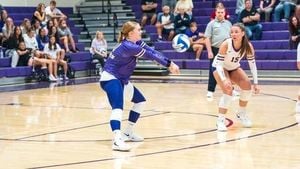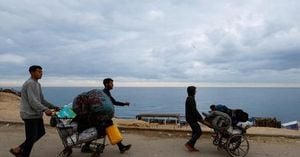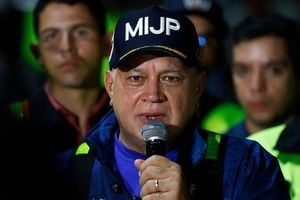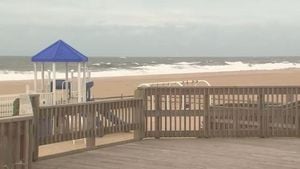In the shimmering heat of a Puerto Rican summer, thousands of fans from across the globe are turning the island into a vibrant celebration of music, culture, and homecoming, all thanks to one man: Bad Bunny. The reggaetón superstar’s 30-show residency, aptly titled "No Me Quiero Ir De Aquí" ("I Don't Want To Leave Here"), has become much more than a concert series—it’s a cultural phenomenon that’s pumping life into Puerto Rico’s economy and spirit.
Since mid-June, San Juan’s Jose Miguel Agrelot Coliseum—affectionately known as ‘El Choli’—has played host to a tidal wave of emotion, nostalgia, and pride. As reported by NPR, the residency is a love letter to Puerto Rico and its diaspora, echoing the themes of Bad Bunny’s latest album, Debí Tirar Más Fotos (“I Should Have Taken More Photos”). The concerts have drawn over 500,000 attendees, many of whom are Puerto Ricans returning from the U.S. mainland, eager to reconnect with their roots. For some, like Michelle García Mercado, the journey home was more than a flight; it was a return to peace. "I feel at peace. I feel happy for the first time in months," she shared with NPR after landing from Orlando.
The numbers behind the spectacle are staggering. According to the Associated Press, Bad Bunny’s residency has generated nearly $200 million in revenue from concert packages alone, with over 48,000 hotel nights booked. On July 27, hotel reservations were up 10% compared to the previous year, and short-term rentals soared—42% higher in August and 61% higher for September than the same months in 2024. The influx isn’t just about the music; it’s a full-blown economic windfall. Nearly three dozen hotels have participated in special Bad Bunny packages, selling 25,000 in a single day. Flights from the U.S. mainland to Puerto Rico’s main airport also jumped by nearly 7% during the residency, as reported by Cirium, an aviation analytics company.
But the impact reaches far beyond numbers. Local businesses are feeling the Bad Bunny effect firsthand. Restaurants like La Casita Blanca in San Juan have seen lines out the door, with one server telling the AP that it’s been “complete bananas” since the singer was photographed dining there. Small shops, tour guides, and even university students are cashing in, leading themed tours of Bad Bunny’s old haunts—his supermarket job in Vega Baja, his high school, and the church where he once served as an altar boy. For $40, fans can walk in his footsteps; for $20, they can snag a “PR” cap and a smile from a local cashier.
Nonprofits are getting creative, too. G8, a group supporting impoverished communities in San Juan, launched a $25 guided bike tour called “I Should Have Biked More,” riffing on Bad Bunny’s album title. Meanwhile, Acción Valerosa’s “Café con Ron” tour ferries visitors to Ciales, a coffee town in the central mountains, blending music workshops with community development. The money raised goes toward transforming a former casino into a community center, showing how the residency’s ripple effects are touching even the most remote corners of the island.
Out in Cabo Rojo, the southernmost tip of Puerto Rico, hotelier Ángel Rodríguez has seen a 7% increase in guests this summer, many drawn by the town’s cameo in a Bad Bunny video. Some visitors even ask to see the elusive Puerto Rican crested toad, now a symbol of local pride thanks to the singer’s advocacy. "Thanks to Bad Bunny, a lot of our landmarks have become known," Rodríguez told the AP, his voice tinged with both pride and surprise.
For Puerto Ricans living abroad, the residency is a balm for old wounds. Decades of economic hardship, a crushing debt crisis, and rising costs have forced many to leave the island. Bad Bunny’s decision to stage all 30 concerts at home has brought thousands back, offering a sense of forgiveness and belonging. "To those of us who've had to leave, but dream of returning—and to those of us who are still here. We don't want to leave! We're still here!" Bad Bunny declared from the stage, as quoted by NPR. The moment was cathartic; the arena swelled with tears, embraces, and a collective sense of healing.
Yarimar Bonilla, a Princeton political anthropologist, described the residency as “a recognition that we left unwillingly, that we've never forgotten this place, that we're still a part of it.” For the diaspora, she told NPR, "it feels like we've been forgiven." Young people, in particular, are rediscovering pride in their heritage. Tanisha Galarza, a 23-year-old musician, left the concert determined to stay and build her future in Puerto Rico. “It’s an amazing feeling,” she said.
The residency has also attracted its share of celebrity sparkle. On August 11, Oscar-winning actors Javier Bardem and Penélope Cruz made a surprise appearance in the VIP section at El Choli, as reported by The Express Tribune. The couple, usually fiercely private, let loose—dancing, laughing, and even mingling with other stars. The highlight came when Bad Bunny invited Cruz on stage to introduce his hit “Voy a llevarte pa PR.” Dressed in a sleek black lace top and jeans, Cruz electrified the crowd by shouting, “Hey, Puerto Rico is something else!” The audience erupted, and Bad Bunny praised her stage presence. Later, Cruz posted clips of the night on Instagram, simply captioned: “Impresionante!!”
For many, the residency is about more than music or celebrity sightings. It’s a celebration of Puerto Rican traditions—salsa, plena, bomba, and reggaetón—woven into every performance. The main stage, designed to evoke the island’s countryside, features a flamboyán tree, a symbol of local beauty and resilience. Fans don pava hats, embrace the endangered sapo concho (crested toad) as a new emblem, and dance the bomba, a rhythm first created by enslaved Africans on Puerto Rico’s shores.
Ricardo Cortés Chico of Discover Puerto Rico summed up the moment: “We can argue that they’re the prettiest, but they’re beaches. What makes us unique is the culture. No one can steal that.”
As the final notes of Bad Bunny’s residency drift through San Juan, the island is left not just with an economic boost, but with a renewed sense of unity, pride, and hope. In the words of the superstar himself: “This is the homeland that I love … I invite you to get to know it.”




